
McDonald's distances itself from Donald Trump. Here are 7 times Trump dragged big brands into politics
A controversial campaign visit is hardly the first time Trump has singled out a company or its executives

A controversial campaign visit is hardly the first time Trump has singled out a company or its executives
Donald Trump is nothing if not a showman. That was on full display this weekend when Trump, as Minnesota Gov. Tim Walz put it, was “cosplaying” as a McDonalds worker in Pennsylvania.
While the Golden Arches’ corporate office was not involved in the campaign season stunt, it still rushed to make clear that it is staying neutral in the 2024 presidential election. The fast food giant said it did not facilitate Trump’s visit and “does not endorse candidates.”
“As we’ve seen, our brand has been a fixture of conversation this election cycle,” the company said in a memo to employees. “While we’ve not sought this, it’s a testament to how much McDonald’s resonates with so many Americans. McDonald’s does not endorse candidates for elected office and that remains true in this race for the next President. We are not red or blue — we are golden.”
At Trump’s visit to a location outside Philadelphia that had been closed for his campaign, he served fries, pretended to work the drive-thru for pre-screened supporters, and briefly wished presidential rival Kamala Harris a happy birthday. The former president has repeatedly made baseless claims aimed at discrediting Harris’ assertion that she briefly worked at a McDonald’s in the 1980s.
Since then, McDonald’s has found itself at the center of the 2024 election discourse.
It’s not the first time that Trump, whether as president or as a candidate for office, has singled out a company — or its CEOs — for one reason or another.
Here are seven other times Trump dragged major corporations into the political spotlight.
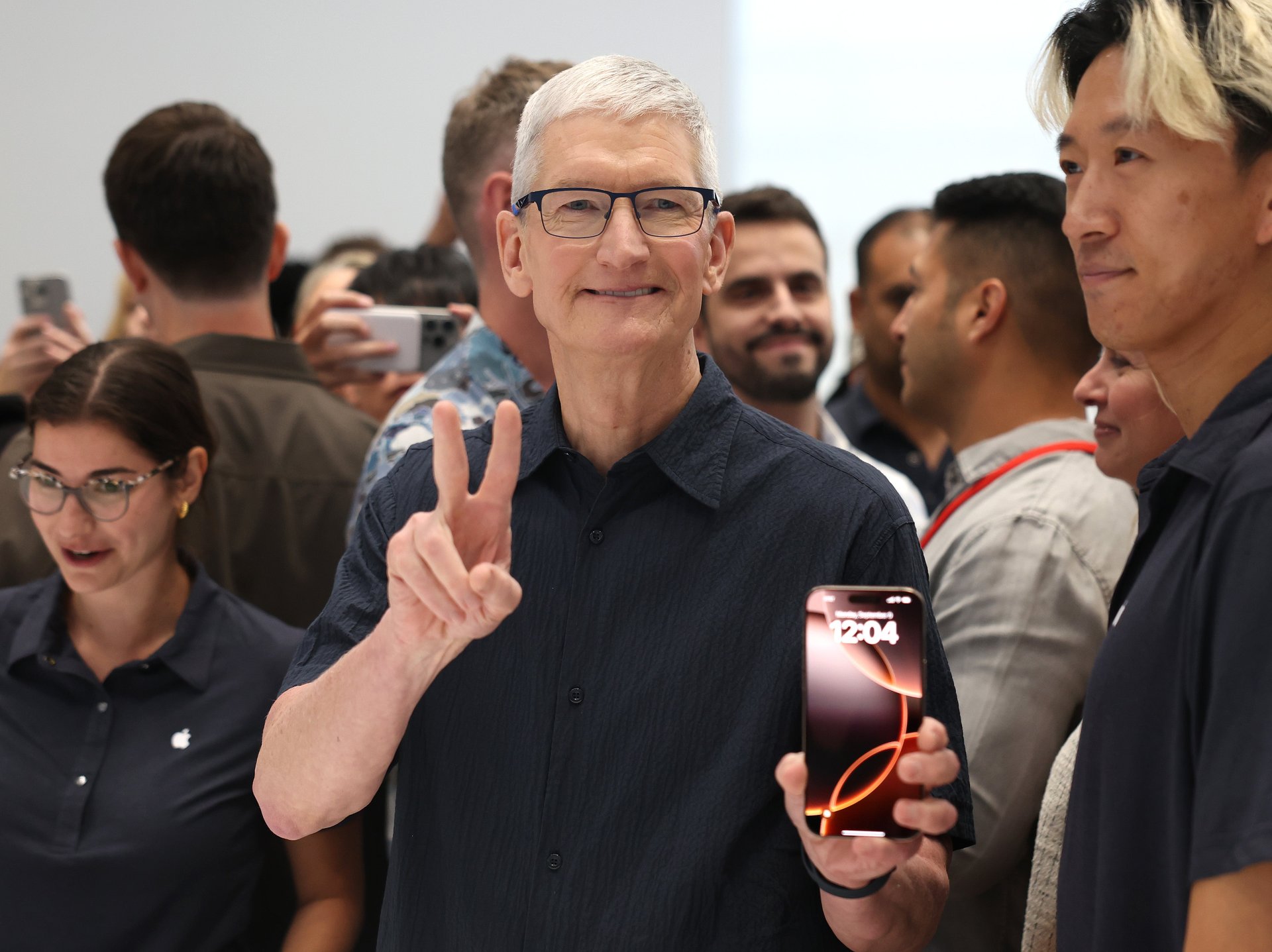
Trump used to be — and, to an extent, still is — a harsh critic of Apple (AAPL). Much of that criticism stemmed from Apple manufacturing in countries such as China and the tech giant’s refusal to unlock its iPhones for law enforcement. For years, Apple has refused to help the Department of Justice access iPhones as part of criminal investigations, including after a 2015 mass shooting in California and a recent assassination attempt against the former president.
“Apple ought to give the security for that phone, OK,” Trump said in 2016, referring to the phone owned by one of the San Bernardino shooters. “What I think you ought to do is boycott Apple until such a time as they give that security number. How do you like that? I just thought of it. Boycott Apple.”
But Trump is also a big fan of Apple’s head honcho, Tim Cook. Last week, he said Apple needed a CEO like Tim Cook, rather than Steve Jobs, the company’s late founder.
“I believe that if Tim Cook didn’t run Apple if Steve Jobs did, it wouldn’t be nearly as successful as it is now,” Trump said on an episode of the PBD Podcast. “I think so because I think Tim Cook has done an amazing job, and I’m not knocking Steve Jobs, but it wouldn’t have been the same.”
Cook frequently called Trump when he was president, sat on the administration’s Workforce Policy Advisory Board, and hosted Trump at Apple’s campus in Austin. In 2019, after Cook managed to convince Trump to get Apple an exemption from a series of tariffs affecting Chinese imports, Cook gifted the then-president with one of the first Mac Pros built at its new U.S. facility. In an interview with Bloomberg News in June, Trump remarked that he found Cook to be “a very good businessman.”

Meta (META) CEO Mark Zuckerberg has had a rocky relationship with the former president, to say the least.
Trump has called Facebook an “enemy of the people” (even as he bought ads on it), claimed that Zuckerberg plotted against him during the 2020 presidential election, and pledged that he would “spend the rest of his life in prison” if he —allegedly — did it again. He’s also a fan of ByteDance-owned TikTok because it competes with Facebook and Instagram.
In August, Zuckerberg expressed regret over Meta’s decision to censor content related to the COVID-19 pandemic in 2021, something Trump and other conservatives have criticized him for. After years of being a punching bag for Democrats and Republicans alike, Zuckerberg has publicly moved to focus on nonpartisanship and away from the liberal causes he once backed. In private, he considers himself a libertarian.
“I’ve done some stuff personally in the past,” Zuckerberg told Bloomberg News in July. “I’m not planning on doing that this time, and that includes not endorsing either of the candidates.”
And Trump approves. In a recent interview, Trump said he likes Zuckerberg “much better now.” He’s also told a story claiming that Zuckerberg called him and said “I’ve never supported a Republican before, but there’s no way I can vote for a Democrat in this election.” Meta has said Zuckerberg hasn’t told anyone, including Trump, how he plans to vote.
As for Zuckerberg, he’s publicly expressed some admiration for Trump, at least in the aftermath of an assassination attempt in July.
“Seeing Donald Trump get up after getting shot in the face and pump his fist in the air with the American flag is one of the most badass things I’ve ever seen in my life,” he told Bloomberg. “On some level as an American, it’s like hard to not get kind of emotional about that spirit and that fight, and I think that that’s why a lot of people like the guy.”

Trump in June tackled Taiwan’s dominance in the chipmaking industry, claiming that Taiwan has taken “about 100%” of America’s semiconductor business. Taiwan is home to 92% of the world’s semiconductor manufacturing capacity, according to the Semiconductor Industry Association, largely thanks to Taiwan Semiconductor Manufacturing Company (TSMC)
Hsinchu, Taiwan-based TSMC is the world’s largest chipmaker, manufacturing an estimated 90% of the world’s most advanced chips that power everything from iPhones to artificial intelligence models.
“Taiwan took our chip business,” Trump told Bloomberg News. “I mean, how stupid are we? They took all of our chip business. They’re immensely wealthy.”
TSMC stock took a hit after Trump’s remarks. The company is a major supplier of companies like Nvidia and Apple, and has been granted billions of dollars to build in the U.S. through the Biden administration’s CHIPS and Science Act.

In August 2020, Trump called for consumers to boycott Goodyear (GT) over a policy that, in part, prohibited employees from wearing “MAGA Attire,” according to Politico.
“Don’t buy GOODYEAR TIRES - They announced a BAN ON MAGA HATS. Get better tires for far less!” Trump wrote on Twitter, now called X, at the time.
The Trump campaign merchandise was banned alongside a number of other items deemed inappropriate for work, alongside “Blue Lives Matter,” “All Lives Matter,” “MAGA Attire” and “Political Affiliated Slogans or Material,” a Kansas television station reported at the time, citing a slideshow presented at Goodyear’s plant in Topeka. “Black Lives Matter” and “Lesbian, Gay, Bisexual, Transgender Pride” were allowed.
Goodyear said the slide discussing that was not created or distributed by its corporate office, nor was it part of a diversity training initiative. The company added that it has “zero tolerance for any forms of harassment or discrimination.”
Despite Goodyear’s statement, Trump doubled-down on his criticism, accusing the Ohio-based company of “playing politics” and saying that “there’s something wrong with the top of Goodyear.” His press secretary at the time, Kayleigh McEnany, accused Goodyear of targeting conservatives, according to Politico.

Trump last month took aim at John Deere (DE), threatening the 187-year-old company with massive tariffs if the company carried out plans to move some production to Mexico.
“I’m just notifying John Deere right now, if you do that, we’ll put a 200% tariff on everything that you want to sell into the United States,” Trump said during a roundtable with farmers in Pennsylvania.
After weeks of pushback from business leaders and political commentators, Trump claimed on Oct. 12 that John Deere had pulled back its plans thanks to his efforts. It didn’t take long for the farm equipment maker to fact-check the former president, saying that it has not announced any plan to cancel its move.
Trump’s spotlight on John Deere came months after the company was the target of conservative backlash opposed to diversity, equity, and inclusion efforts, climate advocacy, and support of LGBTQ events. In July, John Deere backed away from sponsoring “social or cultural awareness” events.

Trump is a big fan of oil and natural gas — one of his constant phrases on the campaign trail has been “drill, baby, drill” — and has been a major recipient of industry campaign contributions. But for all his promises to the industry, he’s also had a habit of getting those companies in trouble.
In October 2020, just weeks before the presidential election, Trump claimed that he had called up the “head of Exxon (XOM),” presumably CEO Darren Woods.
“So I call some guy, the head of Exxon. I call the head of Exxon, I don’t know, you know. I’ll use a company,” Trump said. “‘Hi, how you doing? How’s energy coming? When are you doing the exploration? Oh, you need a couple of permits, huh? OK. ... I’d love you to send me $25 million for the campaign.’”
Such an exchange would violate federal law, which prohibits giving campaign contributions in return for a favor or advantages.
“We are aware of the President’s statement regarding a hypothetical call with our CEO… and just so we’re all clear, it never happened,” ExxonMobil said soon after Trump’s comments, worried that it could get into trouble with authorities.
In May, congressional Democrats announced an investigation into a reported meeting between Trump and key figures at several leading oil and gas firms. The lawmakers requested information about the meeting from eight top oil and gas companies, including Chevron (CVX), ExxonMobil, and Occidental Petroleum (OXY).
During that meeting, he offered a deal, The Washington Post reported: If the executives raised $1 billion for his campaign, Trump would “immediately reverse dozens” of President Joe Biden’s environmental rules and policies once in office.

Harley Davidson, a now 121-year-old company, found itself playing defense to Trump’s ire in 2018 after it said it would manufacture some bikes outside the U.S.
The move came after the then-president hit the European Union with tariffs on steel and aluminum. The bloc retaliated with levies aimed directly at auto manufacturers, which pushed Harley to make its motorcycles destined for the E.U. market in Thailand.
“Many @harleydavidson owners plan to boycott the company if manufacturing moves overseas. Great! Most other companies are coming in our direction, including Harley competitors,” Trump said that August, The New York Times reported. That was a major attitude change from just a year earlier, when Trump hailed Harley as a “true American icon.”
Those dueling tariffs — mixed with a number of other factors, such Trump’s condemnation and an aging consumer base — slammed the company’s bottom line. In early 2020, Harley had some of its worst sales results more than a decade, which led its then-CEO to step down.
— Francisco Velasquez contributed to this article
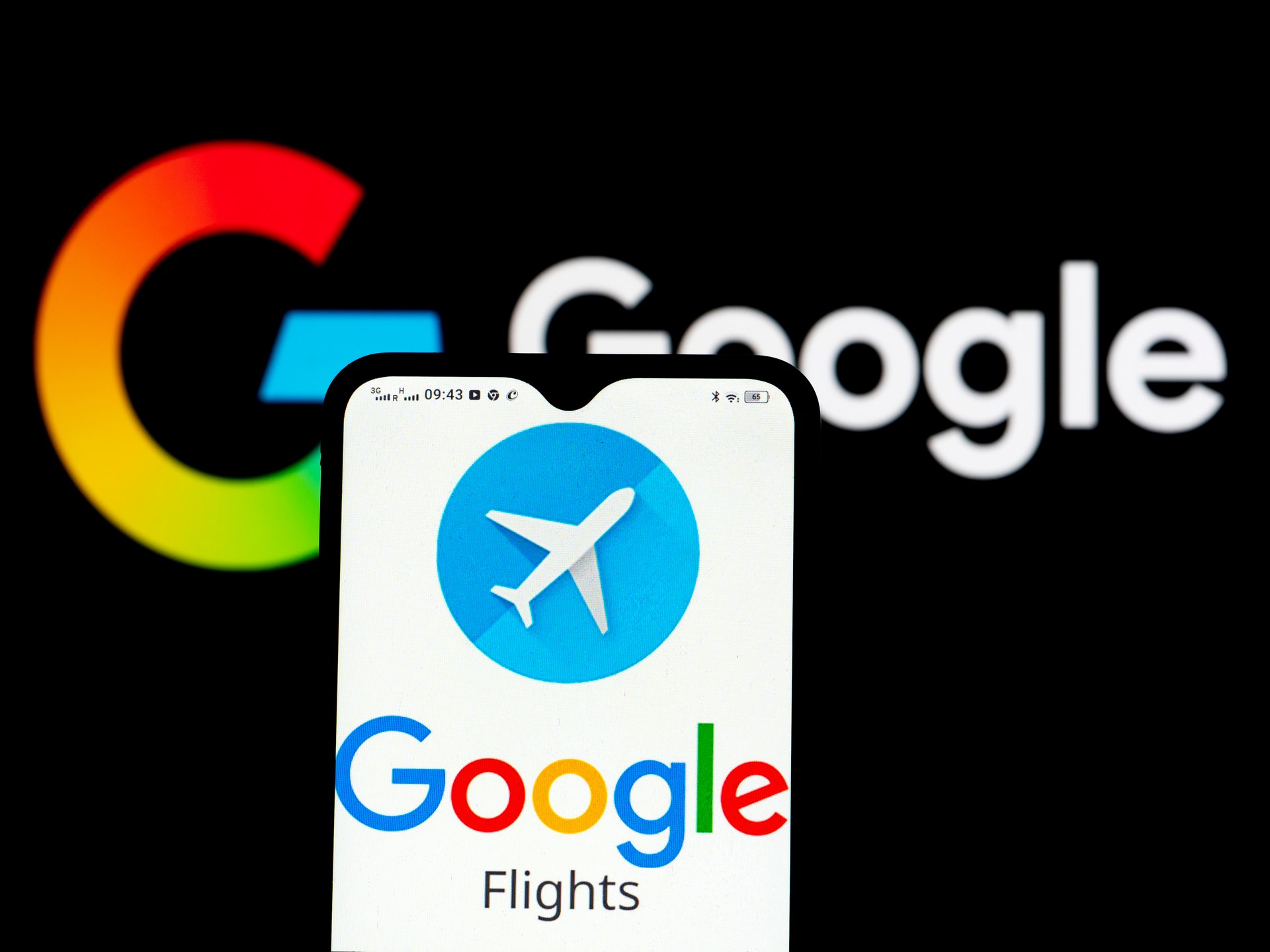
After losing an appeal on a $4.7 billion antitrust charge, the search giant offers up space to its rivals
Google has offered to showcase its rivals in its search results, in a proposal to European regulators, according to a new report. This comes one day after losing an appeal in a European court, and facing a US$4.7-billion antitrust fine for violating the EU’s Digital Markets Act (DMA).
Three months ago, the EU accused Google of favoring its own services like Google Flights and Google Shopping, arguably limiting consumer choice and stifling competition, and accused it of violating the DMA's antitrust regulation.
Reuters, citing documents, reports that Google proposed a vertical search service (VSS) that would feature “objective and non-discriminatory criteria” at the top of its search page, containing links to hotels, airlines, and restaurants. “Other VSS, which are specialized search engines within Google, would be ranked below but without a box unless users click on them,” reported Reuters’ Foo Yun Chee.
The unspoken assumption there is that Google’s current search results are neither objective or non-discriminatory.
The company has been a target on the continent since 2018, when it was fined more than four billion euros for abusing the dominance of its Android operating system. Google has been fined more than eight billion euros since then. President Donald Trump has expressed concerns over the EU’s crackdown on American tech giants, calling it “overseas extortion” and threatening tariffs in response.
"We do not agree with the (Commission's) preliminary findings' position,” said Google in the recent proposal to the EU. “But, on a without prejudice basis, we want to find a workable solution to resolve the present proceedings."
Google’s rivals have a chance to respond to the proposal at a July 8 meeting, while Google is still awaiting a decision in another EU DMA case relating to its digital ad business.
Apple and Meta were fined a combined $800 million in April for violating the DMA. Both are appealing the decision, and on Thursday were not facing sanctions for missing a 60-day deadline to comply with obligations.

Bill Pulte, director of the Federal Housing Finance Agency, demanded Powell's resignation in a Fox Business interview
President Donald Trump's extraordinary offensive against Federal Reserve Chair Jerome Powell is drawing back-up from another administration official.
Bill Pulte, director of the Federal Housing Finance Agency, pushed for Powell's resignation in a Fox Business interview on Friday. It follows an identical string of attacks from Pulte against the central bank chief on social media.
"[Powell] still has interest rates way too high and they're not reflective of the great work that President Trump has done," Pulte said. "Fed Chair Jay Powell either lower the rates or he needs to resign."
Pulte, who oversees housing giants Fannie Mae and Freddie Mac, cited a weak housing market in his case for lower rates. A lower interest rate reduces the cost of a 30-year mortgage.
“As Chairman of Fannie Mae and Freddie Mac, I can tell you that Jay Powell is hurting the housing market by being Too Late to lower rates. He needs to resign, effective immediately,” Pulte said in a Wednesday post on X.
Pulte's attacks align him with Trump's escalating attacks on the Fed, the independent central bank tasked with setting interest rates. The Fed left benchmark interest rates unchanged on Wednesday for the fourth meeting in a row. That development triggered intense backlash from Trump, who mused about installing himself as Fed chair. The President also called Powell "a stupid person" the same day.
Other hardline conservatives such as Sens. Rick Scott of Florida and Tommy Tuberville of Alabama have also called for Powell to resign.
It's unclear whether Pulte, a former private equity executive, secured a green light from the White House to wage a Trump-like offensive against the Fed. The White House and the FHFA did not respond to a request for comment. A spokesperson for the Federal Reserve declined to comment.
William English, a former top Federal Reserve official who is now a finance professor at Yale University, called it "pretty unusual" for administration official to publicly lambast the Federal Reserve. It might not be unprecedented, however.
English added even the appointment of a Trump-friendly Fed chair may not be enough to secure lower interest rates. Powell's term concludes in May 2026, and many of the 12 voting members of the Federal Open Market Committee will remain in their posts.
"The folks voting on policy next spring will be mostly the same as those who voted to keep policy unchanged this week," he said. "So even a Chair wanting easier policy to satisfy the President may well find it hard to deliver."
Other observers echoed concerns about the Fed being able to safeguard its political independence. "It is absolutely nothing new for a president to be critical of what a Fed chair is doing," Claudia Sahm, chief economist at New Century Advisors and a former Federal Reserve economist said. "But typically, those criticisms are behind closed doors."
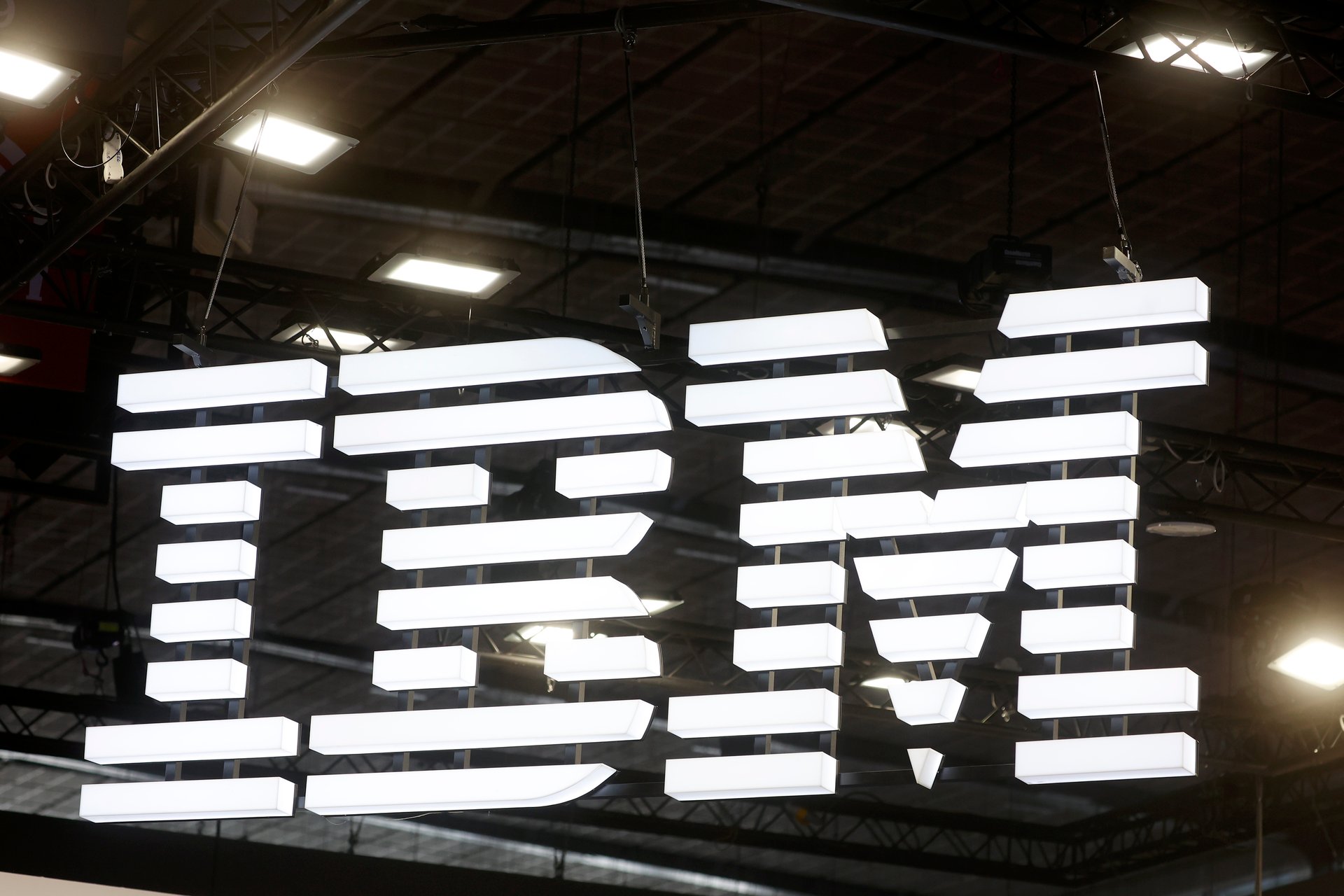
Wedbush analysts raised their price target for IBM stock from $300 per share to $325, calling the company "one of our top software names to own"
IBM might not be the first company that comes to mind when you hear “AI powerhouse.” But in 2025, Big Blue is busy showing it might just be the most underrated player in the AI arms race.
A new research note from Wedbush Securities is the latest vote of confidence. Wedbush analysts raised their price target for IBM stock from $300 per share to $325, calling the company “one of our top software names to own” and “still under owned.” IBM is one of the 30 companies in Wedbush analyst Dan Ives’ recently launched ETF that tracks AI stocks.
Despite a strong run this year — IBM stock is up about 28% so far in 2025 — Wedbush says the company is in the “early stages of a renaissance of growth,” powered largely by its $6 billion (and growing) generative AI business.
The bullish case hinges on what IBM has quietly built: an AI platform that’s already threaded through more than 70 enterprise workflows, from sales and finance to marketing and IT. Its flagship WatsonX platform, originally launched as a reimagining of the Watson AI brand, has evolved into a serious contender in the generative AI platform wars. IBM is at the forefront of quantum computing. And thanks to its hybrid cloud muscle (see: Red Hat and OpenShift), IBM is well-positioned to meet enterprise clients where they are, especially as analysts expect three-quarters of AI applications to run on containers by 2027.
“Built on a scalable and open foundation, IBM can continuously innovate at rapid pace while leveraging the developer community to capitalize on the current opportunity ahead across both hybrid cloud and AI,” Wedbush analysts led by Ives wrote in their note Friday.
That hybrid strategy is core to IBM’s thesis.
While Microsoft and Google battle it out over copilots and consumer hype, IBM is embedding AI into the nuts and bolts of enterprise software. According to Wedbush’s field checks, demand for IBM’s AI agents and developer tools is strong and accelerating. Clients are looking not just to experiment, but to operationalize AI at scale — and they’re turning to IBM to help map out those use cases.
Meanwhile, the company isn’t taking its foot off the gas.
IBM continues to integrate recent acquisitions such as HashiCorp to strengthen its developer ecosystem, and it’s placing long-term bets in frontier tech. The company recently unveiled its roadmap for “Quantum Starling,” a large-scale, fault-tolerant quantum computer that is expected by 2030. A chip, dubbed Quantum Nighthawk, is due later this year and promises meaningful gains in connectivity and fidelity — critical for real-world quantum applications.
“While still in the early stages of playing out," Wedbush analysts wrote, "IBM is taking this multi-billion-dollar quantum computing industry head-on by providing improved software and hardware capabilities to create increased use cases for various sectors.”
IBM chief executive Arvind Krishna’s long game appears to be positioning IBM not just as a consumer-facing AI brand, but as the backbone for the next generation of enterprise infrastructure. That’s not as flashy as chatbot demos or viral product launches — but it might be more lucrative.
The company is also bucking broader macro trends. While many tech firms have seen enterprise spending slow or shift amid budget pressures, IBM told investors that it hasn’t seen a pullback in customer appetite across its portfolio. Instead, the company says clients are leaning in — investing more deeply in cloud and AI as strategic priorities rather than line-item expenses.
If IBM’s momentum holds, the company could finally be entering the “growth company” phase it’s been chasing for over a decade. The AI boom may have many winners, but Big Blue’s steady, platform-centric approach has made it one to watch — especially if a $325 stock price target becomes less of a ceiling and more of a floor.
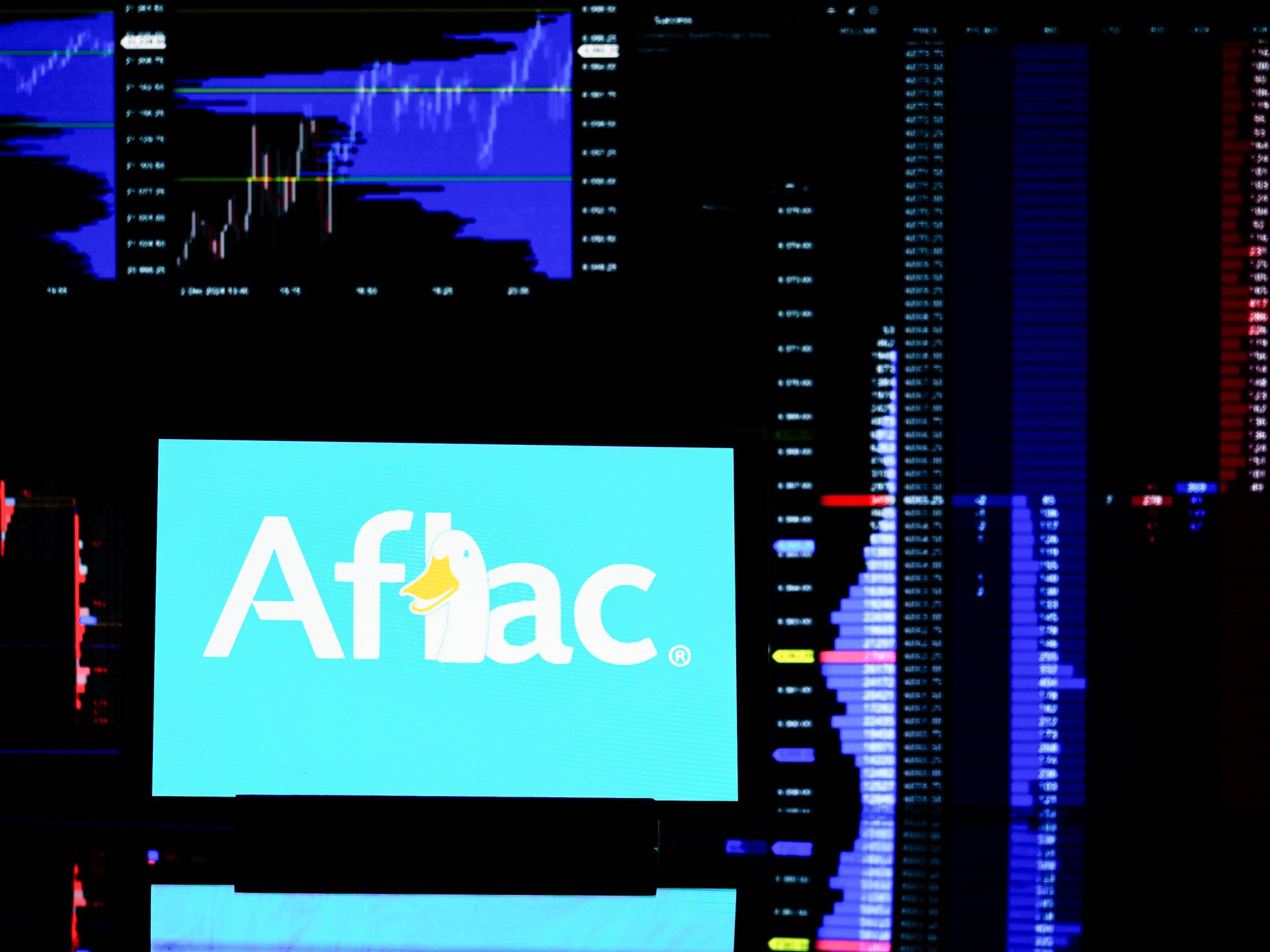
Attack is consistent with Scattered Spider, although no ransomware was involved and the breach was dealt with within hours
Health insurance giant Aflac revealed that it had been the victim of a cybersecurity breach on Friday, but that it had been dealt with within hours.
It’s the latest in a series of hacks targeting the insurance industry, following cyberattacks earlier this week on Erie Insurance, which suffered a weeklong outage, and Philadelphia Insurance Companies, also downed for days.
Aflac, which bills itself as the “No. 1 provider of supplemental health insurance products” in the U.S., has approximately 50 million customers. The company said that it was too early to tell how many users were affected in the breach.
Earlier this week, the Google Threat Assessment Group warned that “multiple intrusions in the U.S.” bear the marks of Scattered Spider, a ransomware group that targeted Marks & Spencer and other retailers, and is most famous for hacking Las Vegas casinos in September 2023.
Chief Google analyst John Hultquist told The Register, an enterprise technology news outlet, that the cybercrime group usually focuses on one sector at a time, and that “the insurance industry should be on high alert, especially for social engineering schemes, which target their help desks and call centers." Social engineering is when a hacker poses as a tech-support worker to acquire security information.
Aflac said social engineering caused their hack, although the breach did not involve ransomware, and they did not name Scattered Spider in their statement, instead referring to “a sophisticated cybercrime group.”
The largest breach in U.S. healthcare history happened in February 2024, to Change Healthcare, which affected more than million users, according to the Department of Health and Health Services. Stolen data in any such incident include not just medical records, but credit card numbers, Social Security Numbers, driver’s licenses, and more.
Aflac reassured its customers that the problem had been dealt with by cyber-incident response protocols, and that customer service would not be affected.
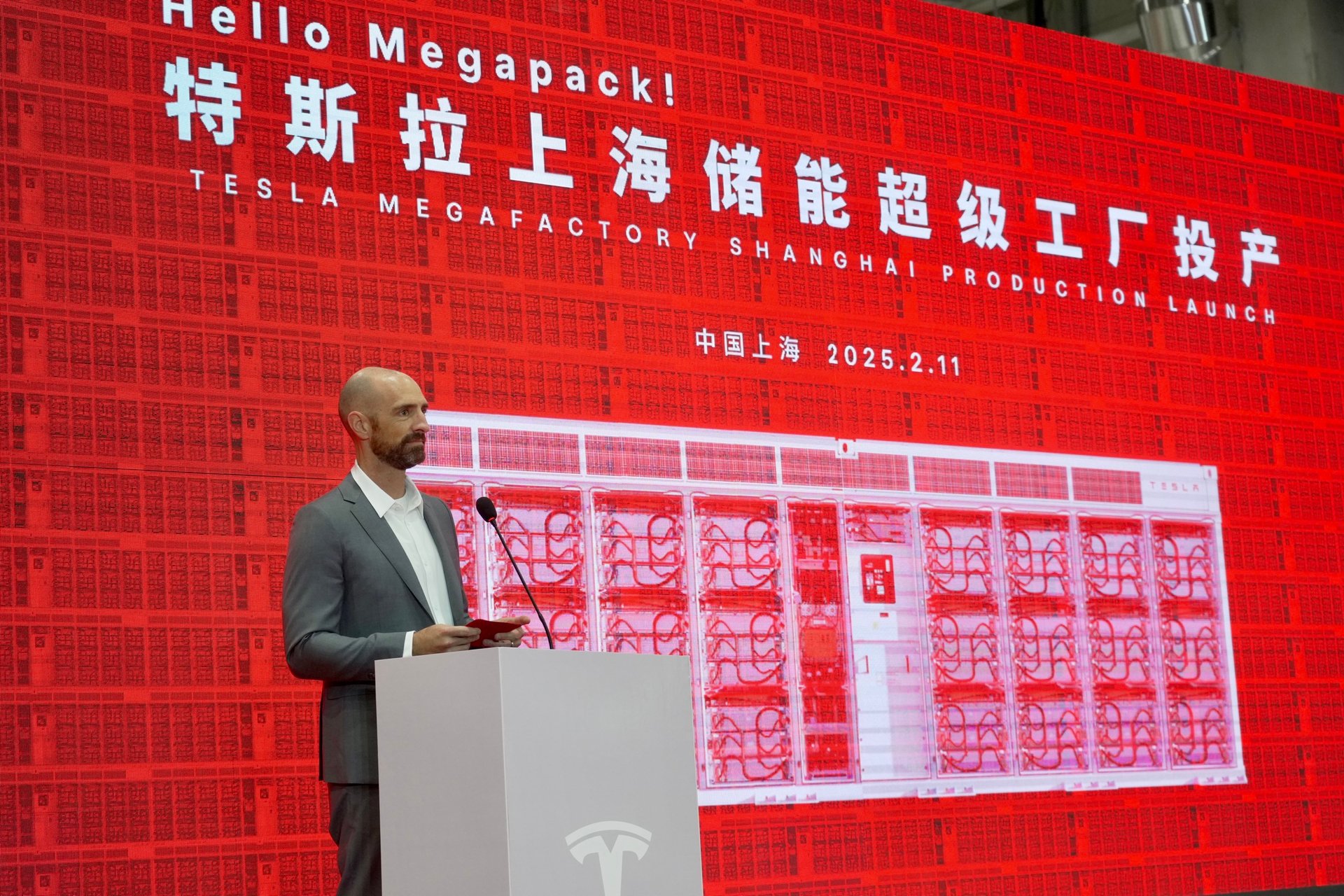
Amid a tense U.S.-China relationship, Tesla has agreed to a $557 million deal for a project that will reportedly be the largest of its kind
While the rest of the world focuses on Tesla’s robotaxis and Cybertrucks, Elon Musk is quietly building a power play — literally.
On Thursday, Tesla signed a roughly $557 million agreement with the Shanghai government to build its first large-scale energy storage station in China, marking a significant expansion of the company’s growing energy business. The facility will deploy Tesla’s Megapack batteries — giant lithium-ion units the size of shipping containers — to help stabilize China’s increasingly renewable-heavy power grid. Tesla said on Chinese social media service Weibo that the site will be the largest of its kind in China when it’s up and running.
The announcement isn’t just a regional milestone. The deal could be a glimpse into Tesla’s long-term future as an energy infrastructure company, not just an automaker.
The battery storage station will be co-located with Tesla’s Megafactory in Shanghai’s Lingang district, which began mass production of Megapacks earlier this year. Once complete, the facility will offer industrial-scale backup power to local energy providers — effectively acting like a giant battery bank that can charge during periods of low demand and discharge when the grid is under strain.
Each Megapack is capable of delivering up to one megawatt of power for four hours, enough to power hundreds of homes during peak demand. In bulk, they form the backbone of Tesla’s utility-scale energy solutions, which are already deployed in places such as California, Australia, and the U.K. But this Shanghai facility signals a major leap: integrating Megapacks directly into the fabric of one of the world’s largest power grids.
On Chinese social media platform Weibo, Tesla described the grid-side energy storage station as a “smart regulator” for urban electricity, capable of flexibly adjusting grid resources in real time to meet shifting demand — a particularly valuable asset as cities scale up intermittent power sources such as solar and wind. While the translation came via Google, the message was clear: Tesla isn’t just selling batteries; it’s positioning itself as an infrastructure player, helping future-proof megacities with intelligent energy systems.
This role — as a kind of software-defined shock absorber for the grid — could become Tesla’s most durable advantage in global energy markets. And in China, where grid modernization is both a national priority and a policy-supported opportunity, it gives Musk’s company a powerful foothold. The Shanghai battery power plant would “effectively solve the pressure of urban power supply and ensure the safe, stable, and efficient electricity demand of the city,” the company said.
The deal couldn’t come at a better time for China. The country is doubling down on wind and solar power, but these sources are inherently intermittent. Energy storage — particularly grid-scale — is increasingly critical to ensuring stable power delivery across sprawling provinces.
In Tesla’s first-quarter 2025 earnings report, the company said its energy storage deployments soared to 10.4 GWh, more than doubling year-over-year and setting a company record. Energy revenue jumped 67% to $2.73 billion, while gross profit hit an all-time high — making the energy division one of the few bright spots in an otherwise rocky quarter. The energy unit continues to outpace Tesla’s automotive business in margin performance, fueling some speculation that the company’s future may lie less on wheels and more on the grid.
During Tesla’s fiscal 2025 first-quarter earnings call, Musk said that “the energy business is doing very well,” adding that its growth would be long-term and substantial — expecting it to “eventually deploy terawatts of capacity per year.” In 2024, Musk said the energy storage business could someday outsize the car business: “It will increase — we actually know that it will — significantly faster than the car business, as we expected,” he said.
That may no longer be hypothetical.
The Shanghai deal isn’t just about deploying batteries. It’s about Tesla embedding itself deeper into the energy grid of the world’s largest clean power market. It also sets a precedent for similar infrastructure partnerships in Europe and the U.S., where grid modernization is also top of mind.
While Wall Street continues to watch Tesla’s vehicle deliveries and AI ambitions, the company’s batteries may be what keeps the lights on — both literally and figuratively.

Pavel Durov says Telegram will become a nonprofit foundation to ensure its independence and freedom of speech
Telegram CEO Pavel Durov has fathered more than 100 children, to whom he will leave his multi-billion-dollar fortune, he told the French magazine Le Point on Thursday.
The 40-year-old CEO said he only wrote his will recently, in which none of his children will receive any of his money until 30 years from now. “I want them to live like normal people, to build themselves up alone, to learn to trust themselves, to be able to create, not to be dependent on a bank account,” he said.
He has six children with three different partners, and more than 100 via sperm donation, in 12 countries. He says the will does not discern between any of them.
“They are all my children and will all have the same rights," he told the outlet. "I don't want them to tear each other apart after my death.”
Amid widespread concern about the inequality gap, Durov has chosen a rather personal form of wealth redistribution.
In a Telegram post last year, Durov said he first donated sperm 15 years ago to help a friend conceive. The head of the clinic told him he was “high-quality donor material” and told him it was his “civic duty to donate more sperm to anonymously help more couples.” Durov says he will “open-source my DNA so that my biological children can find each other more easily.”
His succession plan for Telegram is that it will become a non-profit foundation. “My goal is to ensure the platform's continuity,” he said. “I want it to continue existing independently, respectfully of privacy and freedom of expression."
Durov first made his fortune in 2013, when he sold his stake in the Russian equivalent of Facebook, VKontakte, and invested much of the proceeds in Bitcoin. He started Telegram that year with $200 million.
The Bloomberg Billionaires Index estimates his net worth at $13.9 billion, but Durov says he doesn’t draw a salary or dividends from his company. “Telegram is a source of expenses, not revenue,” he told Le Point, adding that he is the sole shareholder. A failed blockchain project, which was banned by the SEC, put the company in $2 billion of debt.
Telegram now has more than one billion monthly active users. It helped pioneer high-encryption messaging, beloved by privacy activists, but also popular with criminals. In 2024, Durov, an outspoken free-speech champion, was arrested in France on charges that Telegram was facilitating a variety of crimes, including child pornography, drug trafficking, and money laundering. “Just because criminals use our messaging service among many others doesn’t make those who run it criminals,” he told Le Point.
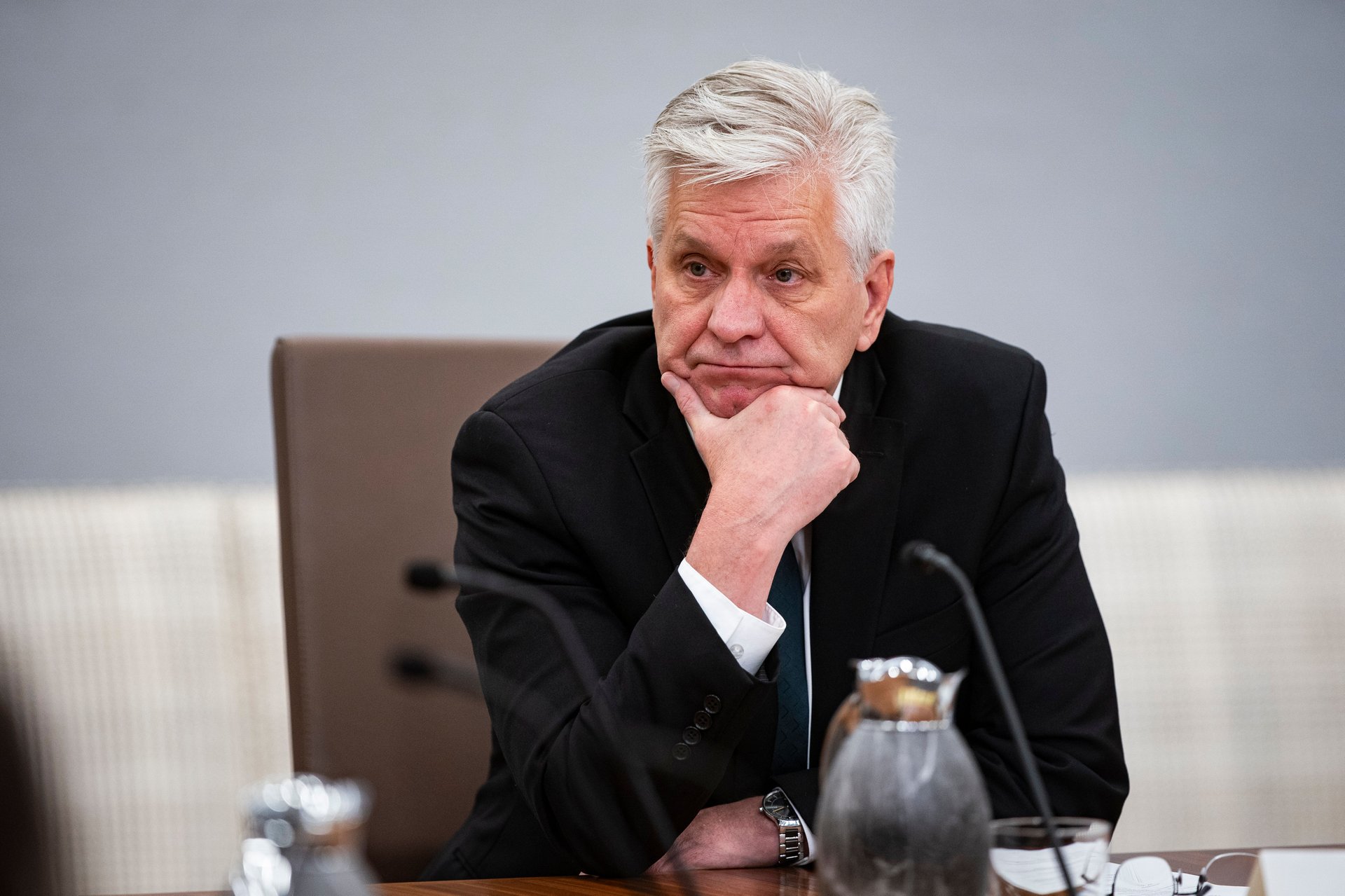
Federal Reserve Governor Christopher Waller argued for a July interest rate cut since he doesn't expect a tariff-induced inflation spike to linger
A top Federal Reserve official said Friday he believes the central bank should move ahead with an interest rate cut next month.
"I think we’re in the position that we could do this as early as July,” Federal Reserve Governor Christopher Waller said in a CNBC interview. “That would be my view, whether the committee would go along with it or not.”
Waller added he doesn't expect inflation that might stem from tariffs will reach a significant level or linger for a prolonged period.
"I don’t think we need to wait much longer, because even if the tariffs come in later, the impacts are still the same," Waller said. "It should be a one-off level effect and not cause persistent inflation.”
The Federal Reserve held interest rates steady after officials wrapped up a two-day meeting on Wednesday. The move left the benchmark rate at its current range of 4.25% to 4.50%.
"The unemployment rate remains low, and labor market conditions remain solid. Inflation remains somewhat elevated," the Fed statement said. It was the fourth meeting in a row in which Fed officials decided to sit tight and not change interest rates in either direction. They still signaled that two rate cuts were on deck for 2025.
President Donald Trump has not let up in his pressure campaign to prod the Federal Reserve to lower interest rates. On Wednesday, he said nothing he's done has successfully persuaded the central bank to lower interest rates.
"Now we have a man that just refuses to lower the Fed rate, just refuses to do it," he said, referring to Fed Chair Jerome Powell. "He's not a smart person. I don't even think he's that political. I think he hates me, but that's okay."

Elon Musk has been promising a robotaxi launch for years, and it's finally almost here. But there are significant caveats and limitations
After years of delays and bold promises, Tesla is preparing to launch its first robotaxi service on June 22 in Austin, Texas — though the rollout will be far more limited and cautious than CEO Elon Musk once envisioned.
The pilot launch is less of a truly autonomous debut and more of a tightly controlled test with serious investor implications. The rollout will reportedly involve just 10 to 20 Model Y SUVs operating within a geofenced area of Austin, with each vehicle carrying a human “safety monitor” in the front passenger seat. Tesla has also set up a teleoperations team to supervise the fleet remotely and intervene, if needed. The service will be invite-only at launch, with Tesla selecting influencers, investors, and customers to participate.
Rides will be available from 6 a.m. to midnight, but the robotaxis won’t go everywhere: Airport trips are off-limits, and routes will avoid complex intersections. Service may also be paused during bad weather. The goal, Tesla says, is to gradually scale the program while closely monitoring safety — a major concern for regulators and lawmakers.
The National Highway Traffic Safety Administration is still investigating Tesla’s Full Self-Driving (FSD) software, which has been linked to dozens of crashes and at least 13 fatalities. Critics have argued that Tesla’s marketing around FSD has overstated the system’s capabilities, which still require frequent human intervention and don’t meet the industry standard definition of autonomous driving.
In Texas, state lawmakers have formally requested that Tesla postpone the launch until rules governing autonomous vehicle operations take effect on September 1. So far, the company hasn’t indicated that it will delay its rollout.
Musk, who previously said Tesla would have 1 million robotaxis on the road by 2020, has acknowledged that this June launch won’t be fully autonomous. He described the rollout as an “early access” phase and said the company is being “super-paranoid” about safety — warning that the June 22 date could be pushed back as a result. He also teased a separate demonstration for later this month, where a Tesla would drive itself from the factory to a customer’s home by June 28. (Whether that trip involves a chaperone remains unclear.)
Wall Street, for its part, is watching closely — and betting big.
Tesla stock is up more almost 45% since April, thanks in part to robotaxi enthusiasm and Musk’s renewed focus on AI. Wedbush analysts have predicted that Tesla could expand robotaxi service to 25 U.S. cities within a year. Longtime Tesla bull Dan Ives, Wedbush’s managing director, said in a Friday note that Tesla’s “$1 trillion autonomous era” will begin with Sunday’s launch.
“Taking a step back we view this autonomous chapter as one of the most important for Musk and Tesla in its history as a company...as we believe the AI future at Tesla is worth $1 trillion to the valuation alone over the next few years,” Ives wrote. “There are countless skeptics of the Tesla robotaxi vision with many bears thinking this day would never come and now it’s about Musk and Tesla creating this foundation of autonomous growth for years to come and it all starts Sunday on Sixth Street in Austin.”
Still, Tesla’s stock is down almost 24% in the past six months and 16% year to date, making other analysts more skeptical. Some at Barclays and Baird have warned that Tesla’s software still trails competitors such as Alphabet’s Waymo and Amazon’s Zoox (which already offer fully driverless rides in multiple cities with more mature software stacks) and say Tesla’s robotaxi hype could set the company up for another reality check if early tests stumble.
Tesla’s pitch is that its approach will ultimately scale faster than anyone else’s. Millions of Teslas already on the road are logging miles and feeding data to the company’s AI. Tesla uses vision-only software, while rivals also rely on lidar and radar sensors and stick to pre-mapped routes, expanding methodically, city by city. But scale doesn’t guarantee autonomy.
Meanwhile, the competition is cruising ahead.
Waymo’s fully driverless robotaxis already operate in parts of Phoenix, San Francisco, and Los Angeles, with no human monitors and millions of real-world miles under their belt. Zoox is testing purpose-built vehicles with no steering wheel at all. Cruise, GM’s self-driving unit, is rebooting after a string of safety scandals but plans to return to the streets later this year.
Compared with these players, Tesla’s Model Y robotaxis — with a front-seat babysitter — could look more like a beta test than a breakthrough.
Still, if Tesla can execute a smooth (if modest) launch, it could be the first real proof point in Musk’s ambition to pivot the company from a carmaker to an AI platform — a shift he’s described as “transformational” to Tesla’s valuation. The company is betting its future not on selling vehicles to drivers, but on selling robotaxi rides to passengers — and data to itself. If it works, Tesla could lead the pack. If it doesn’t, it’ll be yet another missed milestone in a saga that’s been stuck in neutral for years.
And come June 22, we’ll find out which side of the road Tesla’s robotaxis will land on.
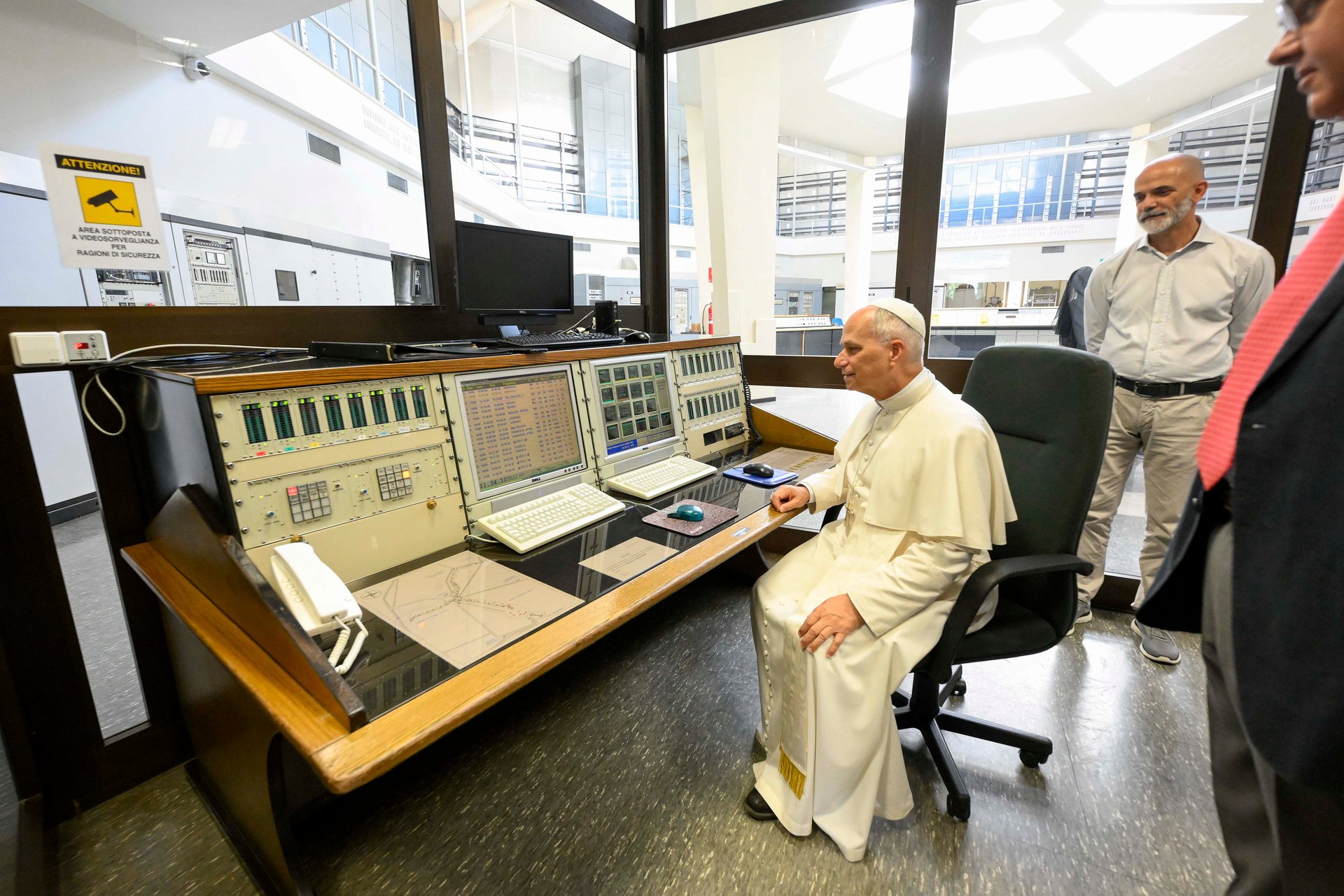
Pope Leo wants AI to be regulated ethically, while the U.S. is poised to bar any state-level regulations for a decade
At the Second Annual Rome Conference on Artificial Intelligence on Friday, Pope Leo talked about where AI is headed.
The event was attended by Vatican officials, American academics, and Silicon Valley executives from Google, OpenAI, Anthropic, Meta, and more. The new pope urged serious reflection on “the inherently ethical dimension of AI, as well as its responsible governance.”
Pope Leo acknowledged AI’s “extraordinary potential” but said there were “troubling questions on its possible repercussions on humanity’s openness to truth and beauty, on our distinctive ability to grasp and process reality.”
The Trump administration is touting legislation, embedded in the “big, beautiful bill” that the Senate hopes to pass before summer recess, that would bar states from regulating AI for a decade. There has been bipartisan opposition to the measure, including from staunch Trump supporters like Marjorie Taylor-Greene.
Even Anthropic CEO Dario Amodei thinks the bill is “far too blunt an instrument.” In a New York Times op-ed, Amodei wrote, “I believe that these systems could change the world, fundamentally, within two years; in 10 years, all bets are off. Without a clear plan for a federal response, a moratorium would give us the worst of both worlds — no ability for states to act, and no national policy as a backstop.”
Pope Leo said AI’s benefits and risks must be evaluated using a “superior ethical criterion,” adding that it “challenges all of us to reflect more deeply on the true nature and uniqueness of our shared human dignity.” He added that “access to data — however extensive — must not be confused with intelligence.”
The Vatican has been monitoring AI development since at least 2020, issuing a “Call for AI Ethics” aiming to “create a future in which digital innovation and technological progress grant mankind its centrality.” IBM and Microsoft participated in the paper.
In 2023, Pope Francis warned about a “technological dictatorship” unless AI was subject to a binding international treaty, and was particularly concerned about military usage. Earlier this year, the U.S. announced “Thunderforge,” a Scale AI program to integrate AI into military planning and operations. This past week, OpenAI landed a $200 million defense contract, and tech execs were sworn in as Army Reserve officers, advising on AI use.
Pope Leo XIV named himself a successor to the pope who supported labour rights during the Industrial Revolution. In his first public address after becoming pope in May, Leo said that because of AI progress, society was in the midst of a new industrial revolution, with “new challenges for the defense of human dignity, justice and labor.”